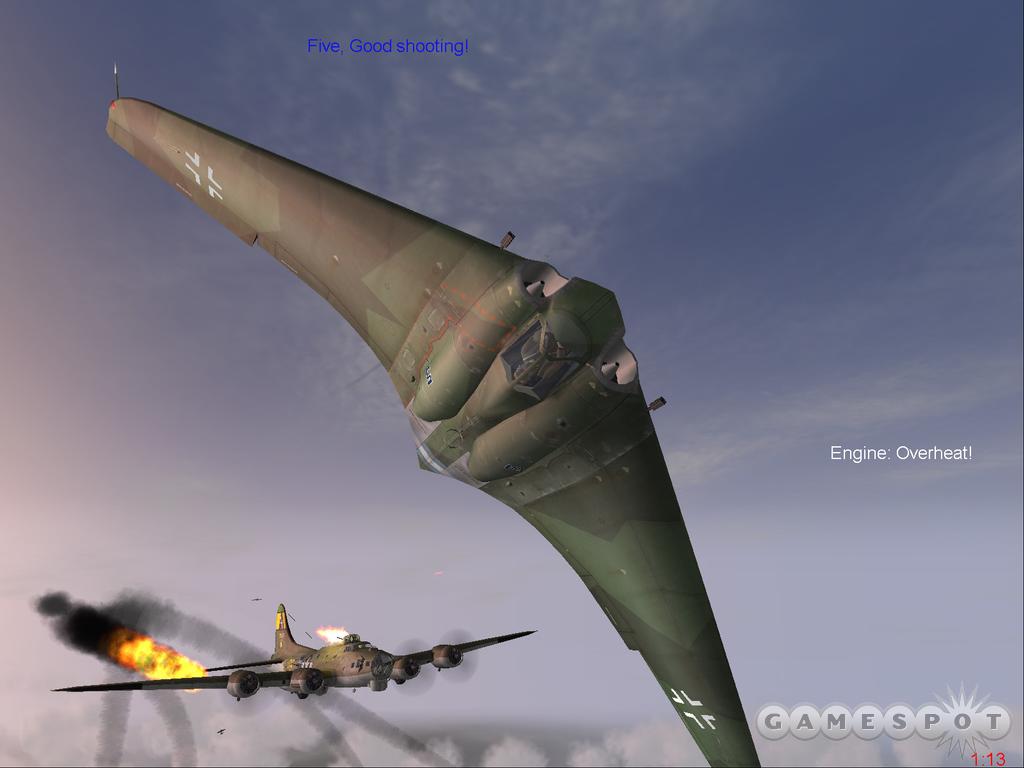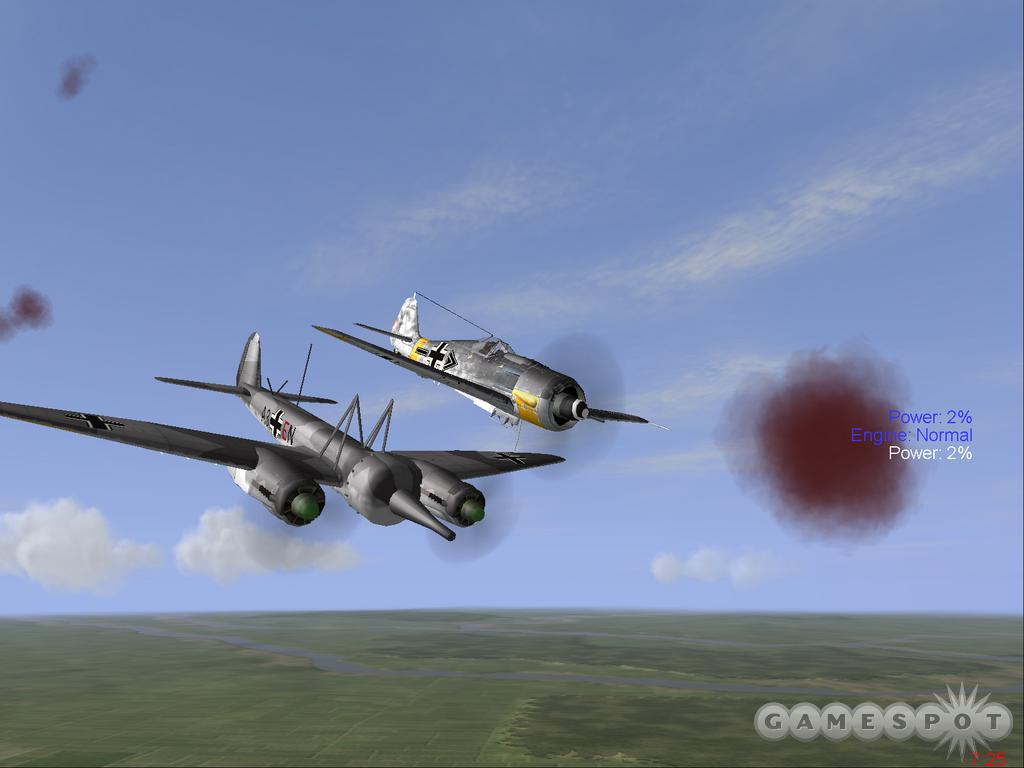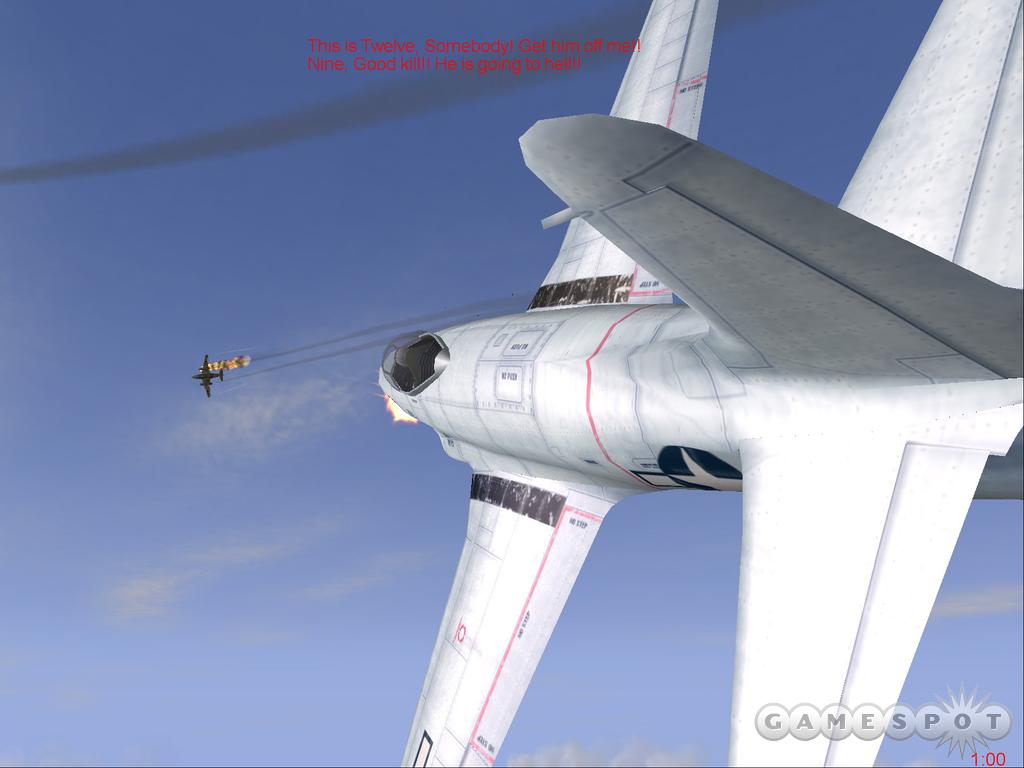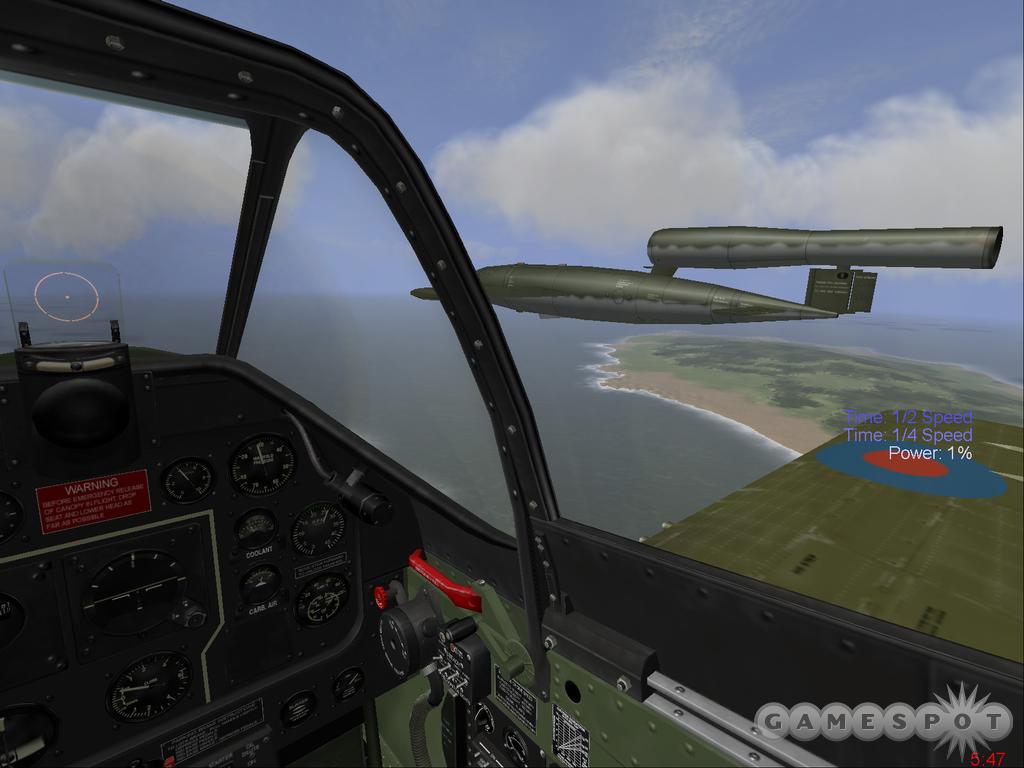The best WWII flight sim just got better, thanks to the Ace Expansion Pack for IL-2 Sturmovik: Forgotten Battles. This add-on doesn't really have a theme, but when there's this much new stuff to play with, it really doesn't need one. There are 20 new flyable planes (with variants of certain models pushing the total number of new aircraft to 28), along with new Ardennes, Normandy, and Pacific maps, and enough new campaigns and missions to placate fans until 1C:Maddox's upcoming Battle of Britain sim is released.

A number of new prop planes have been included, some of which have already appeared in previous free patches. However, these have been updated enough to justify a commercial release. American P-51B, P-51C, and P-51D Mustangs, along with P-38L and P-38J Lightnings, can now escort nonflyable B-17Gs and C-47s. Additionally, the P-63C Kingcobra--the majority of which were sent to Russia under the Lend-Lease Program--makes its first appearance. British pilots get four versions of the highly maneuverable Spitfire Mk.Vb to help fend off a number of new German planes, including the heavily armed twin-hulled Bf-109Z, the Ju-87D-5, the long-awaited twin-engine Bf-110G-2, and the tricky Ta-152H-1. Meanwhile, the Japanese get the maneuverable but fragile A6M2 and A6M5 Zeros, along with three variants of the nigh-unstoppable Ki-84 Hayate ("Frank"). There are a few other flyable prop planes as well, including the J8A, the Fiat CR.42 and G.50, and the IAR-80A and IAR-81C.
A few new flyable jets and rocket-propelled fighters have also been added to the virtual hangar. Most are equipped with devastating armaments, and all are incredibly fragile under fire, so fights between these speedy aircraft tend to be swift and brutal. The American YP-80, the precursor to the Korean Conflict's P-80/F-80 Shooting Star, is a nimble match for German jet-powered Me-262s, new He-162A-2s, and new Ho-229 A1 Flying Wings. The Me-163B rocket fighter is incredibly challenging and rewarding to fly because it must be nursed gently at speeds in excess of 1,000kph to avoid blacking out, and ammunition for its powerful cannons is limited.
A few oddities were thrown in that serve as interesting diversions. The flyable Mistel is literally a blast, since it consists of a hollowed out Ju-88 bomber--which has been packed with tons of explosives--that has a FW-190 fighter harnessed to its top. The pilot sits in the fighter, where the control stick moves the control surfaces of both the fighter and the Ju-88 to help guide the behemoth to its target. The pilot just aims, detaches the bomber, scrambles out of the way of the mushroom cloud that appears a few seconds later, and enjoys watching the replay over and over and over again.
V1 rockets are another challenging addition, since it is possible for fast fighters to pull up alongside them to tap them with their wings, thus nudging the jet-powered bombs off course. This same method was used by actual WWII pilots because shooting at a V1 generally caused an explosion that was large enough to heavily damage or destroy the pursuing fighter.

The cockpits and skins included with the new planes are spectacular. The J8A cockpit, in particular, is a thing of beauty. Additionally, some new optional effects give the water a more realistic look--at the expense of reduced frame rates. Outside of this, little has changed in the graphics and sound departments, but since IL-2 Sturmovik: Forgotten Battles looked and sounded great to begin with, no upgrades were really necessary.
The expansion comes with dozens of new single-player missions that incorporate the new planes, as well as several new dynamic campaigns that feature combatants from the Polish to the Hungarians. One of the most interesting campaigns has the player flying the aforementioned J8A (the Swedish version of the British Gloster Gladiator) while fighting for Finland against the Russians during the Continuation War. The obscurity of this campaign represents all that is good about the IL-2 series. Here you are in a fixed-gear biplane of a 1930s vintage (designed by the British and supplied by the Swedes) that is struggling to launch itself airborne to plink away at marauding Russian SB 2M-100A bombers that appear to be powered by washing machines. The IL-2 series has always brought these sideshows to the center ring, and in many ways, the results are far more entertaining than typical WWII air battles, which usually involve high-profile, high-powered, and heavily armed front-line fighters.
Another focal point of this series is the low-altitude combat that was typical of the eastern front, as opposed to the relatively high-altitude aerial battles that were common on the western front. This expansion embellishes this theme. Many of the complaints that have been leveled about flight models on the official and unofficial forums revolve around the fact that compared to expectations, legendary fighters like the P-51D and P-38L seem to underperform, while others, like the Japanese Ki-84 "Frank," perform much too well. To be fair, the Frank does seem to be a bit too potent, but these arguments rarely seem to take into account that most combat in the single-player missions and campaigns take place at altitudes of 15,000 feet or below--and many times at altitudes much lower than this. Staying down in the weeds makes combat much more exciting, but it also contradicts most of the perceived notions about aircraft capabilities that many players have had pounded into their heads for years. For example, compare the performance of a P-51D Mustang to a nonsupercharged P-39 Airacobra at 20,000 feet, and the P-39 turns into a pathetic joke. Make the same comparison at 2,000 feet, and the P-39 becomes much more formidable.

The bottom line for players is that unless they find people to play with online who want to fight at high altitudes, they must throw out most of the generalities they "know" about the most famous WWII fighters to learn how all the planes perform at low to midrange altitudes. The clipped-wing variants of the Spitfire Mk.Vb aircraft included in this package are perfect examples of modified planes that generally work better in the sim than their standard-model counterparts do. In these fighters, each end of the Spitfire's trademark elliptical wings is lopped off to give the plane's roll rate a boost and to improve its low-altitude speed, but the trade-off is vastly inferior performance at high altitude, compared to the standard Spitfire. There are some exceptions, like the jets, rockets, and the Ta-152H-1, which is incredible above 20,000 feet but inspires much less confidence down low. Overall, however, prepare to spend a lot of time dodging trees.
There are no specific mentions of AI improvements in any of the documentation that accompanies this expansion, but during testing, AI friends and foes pulled off some tricks we've never seen them do in the past. During one battle, we watched an AI P-38 pilot lazily corkscrew upwards and to his right by using his superior engine power to slowly extend away from four pursuing Zeros, which was a tactic commonly used during the war. On another occasion, we watched as an AI-controlled Me-109 used a series of vertical switchback turns for a good five minutes to extend away from a pursuing Spitfire while simultaneously staying out of his opponent's sights. The Me-109 then turned violently to fire a snapshot that went straight into the top of the Spitfire's canopy for a quick kill. At the higher difficulty levels, AI planes often fight in the vertical instead of trying to dogfight in horizontal-turning battles, and they almost universally take advantage of the strengths of their aircraft.
No matter how good the AI is, it can't compare to the challenge of facing off against seasoned veterans online, and the Ace expansion offers many new online missions, including several new cooperative multiplayer ones and an online cooperative dynamic campaign. This mode automatically generates new missions when old ones are completed--just as in the offline dynamic campaigns--but you get to fly the missions with your buddies to keep track of scores. Newcomers should be aware that flying online is extremely unforgiving. The IL-2 community is a particularly hardcore group of gamers, and players who don't want to manually deal with things like propeller pitch and supercharger settings should stick to the game's excellent single-player component.

Despite all the additions, there still is room for improvement. It still isn't possible to use all of the available maps in the Quick Mission Builder, although the new Pacific map was added as an option. There, surprisingly, are no dynamic campaigns included for the new American fighters. Most planes don't stall properly and, instead, immediately begin to spin. Many cockpit gauges are modeled but are nonfunctional. The P-38's propellers can't counterrotate to eliminate torque, as they did in real life (though this is probably due to an inherent limitation in IL-2's flight engine). This list of minor flaws could go on and on, but its total length is minuscule compared to the massive number of excellent additions this expansion serves up. As a result, IL-2 fans should nab a copy immediately, despite its relatively high price. Newcomers should also look into the IL-2 Sturmovik: Forgotten Battles Gold Edition, which comes with IL-2: Forgotten Battles and the Ace Expansion. Furthermore, all users should keep an eye out for an upcoming free patch that will include several more planes. IL-2 may already reign as the best WWII air combat series, but if it keeps getting expansions like this and continues to receive such enthusiastic support from its developers and fan community, it has nowhere to go but up.